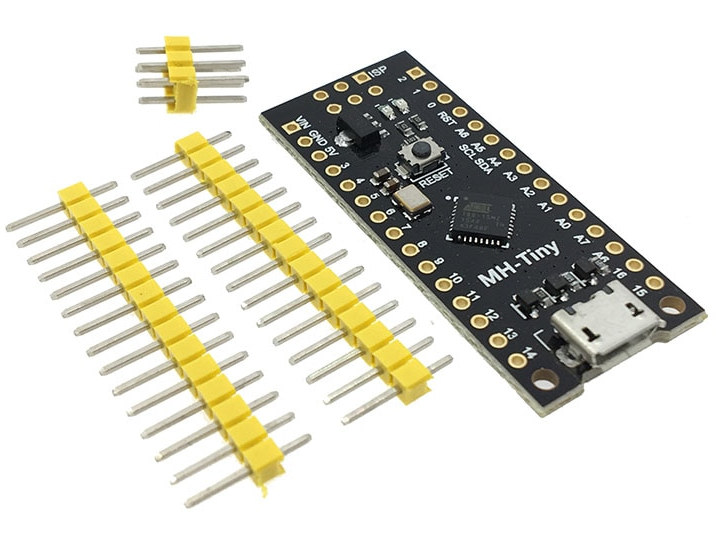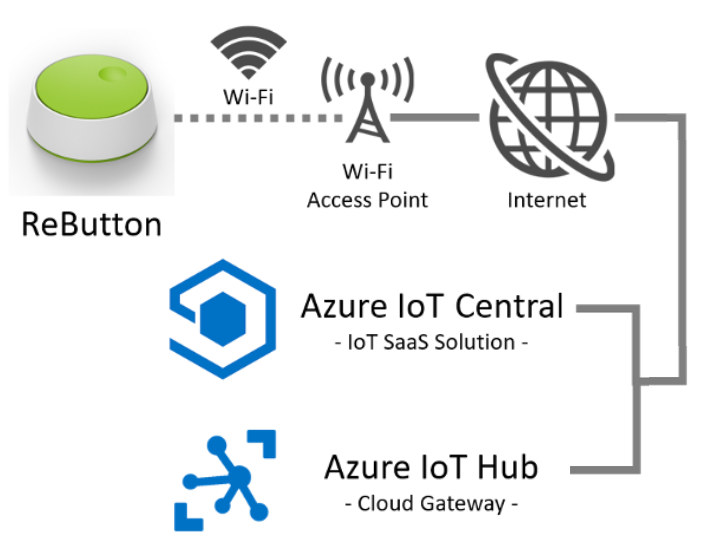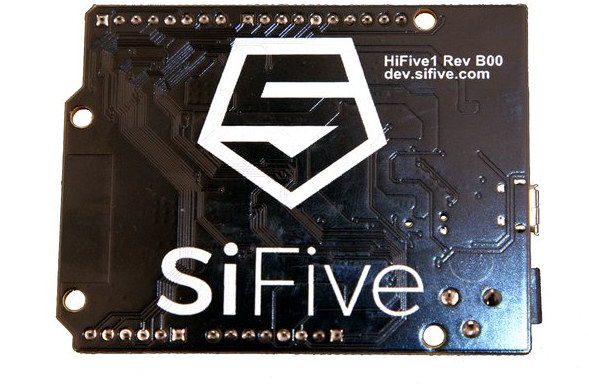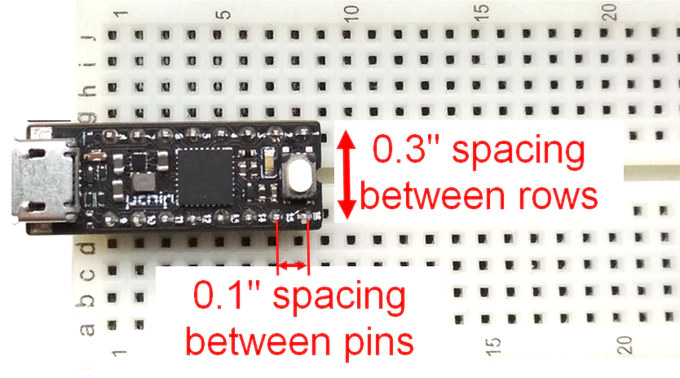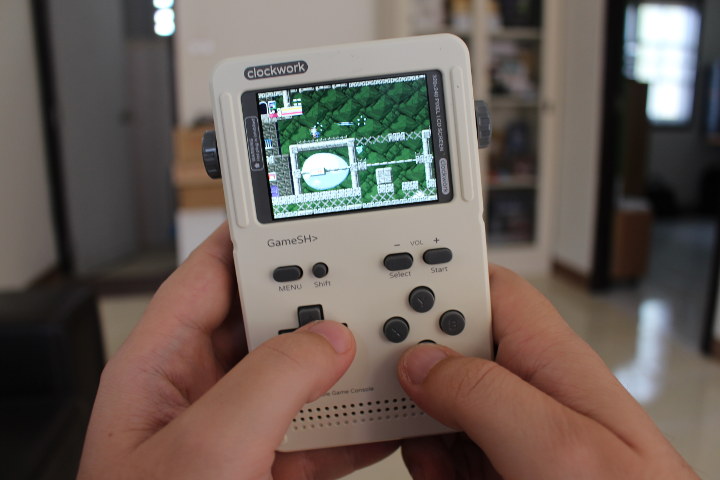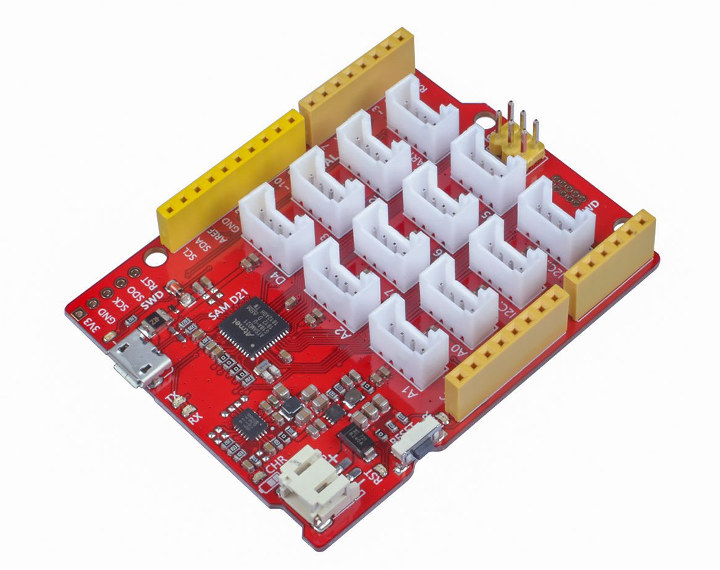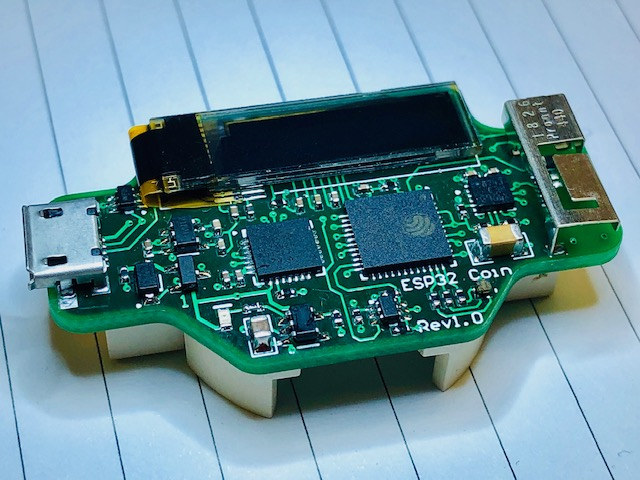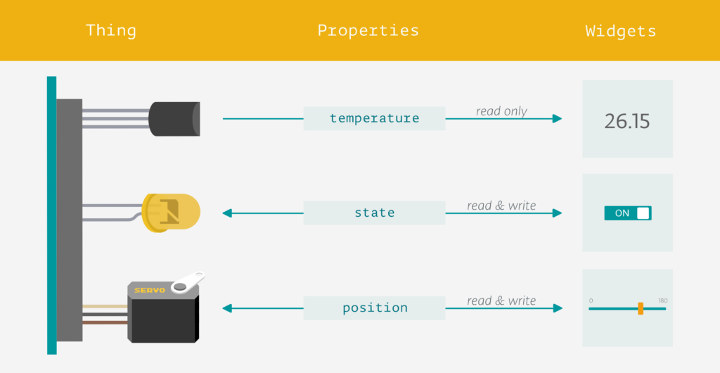Bluepill is a popular STM32 Arm Cortex-M3 development board in a compact form factor, and can be programmed with the Arduino IDE thanks to STM32duino project. A key selling point is also its ultra low price since it is now available for $1.67 including international shipping. I’ve now been informed a similar board is available, but instead of an STMicro MCU, it comes with Microchip ATtiny88 AVR micro-controller. We first discovered MH-Tiny ATtiny88 micro development board on Electrodragon where it is sold for $2.94, but the board is also listed on Aliexpress for virtually the same price as Bluepill board. MH-Tiny ATtiny88 micro development board specifications: MCU – Microchip ATtiny88 8-bit AVR MCU @ 16 MHz with 8KB ISP flash memory (over 6KB available after bootloader footprint taken into account), 64 bytes EEPROM, 512 bytes SRAM USB – 1x Micro USB port for power and programming Expansion – 2x 15-pin […]
ReButton WiFi Button Features MXCHIP EMW3166 Module
We’ve previously covered WiFi buttons based on ESP8266 processor, but Seeed Studio has just launched ReButton “developer device” that serves the same purpose but features STM32 based MXCHIP EMW3166 WiFi module instead, exposes one I2C grove connector, and is preloaded with sample firmware that triggers Azure IoT Central or Azure IoT Hub. ReButton hardware specifications: MCU module – MXCHIP EMW3166 module including STM32F412 Arm Cortex M4F MCU @ 100 MHz with 256KB SRAM, 1MB+2MB SPI Flash, and Cypress BCM43362 WiFi chip Input – 1x Push button Output – 1x RGB LED Extension – 1x I2C Grove connector (3.3V I/O) Debugging – 1x SWD pads, 1x UART for debugging Misc – 1x Jumper switch Power supply 2x AAA Alkaline batteries (LR03) Internal supply voltage – 3.3V Dimensions – 70 x 70 x 25mm The ReButton comes preloaded with an Arduino sketch that handle key presses and send a trigger to Azure […]
HiFive1 Rev B Board Gets FE310-G002 RISC-V Processor, WiFi & Bluetooth Module
SiFive launched what may have been the very first RISC-V development board in 2016 thanks to their HiFive1 Arduino compatible board powered by Freedom E310 (FE310) open source RISC-V processor. The company has now launched an upgrade version of the processor and board. Meet FE310-G002 processor and HiFive1 Rev B development board. HiFive1 Rev B development board specifications with new features highlighted in bold or stricken-through: MCU – SiFive Freedom E310-G0002 32-bit RV32IMAC processor @ up to 320+ MHz (1.61 DMIPS/MHz) Storage – 32 Mbit SPI flash (was 128 Mbit in the first version) Connectivity – ESP32-SOLO-1 WiFi & Bluetooth module I/Os 19x Digital I/O Pins 19x external interrupt pins 1x external wakeup pin 9x PWM pins 1/3 SPI Controllers/HW CS Pins I/O Voltages – 3.3V or 5V supported; note: bidirectional level shifters removed so FE310-G002 can drive the I/O pins directly at 3.3V only. USB – 1x micro USB […]
DIP-Sized uChip Arduino Zero Compatible Board Loves Your Breadboard (Crowdfunding)
Most so-called breadboard-friendly boards that can easily be inserted into a breadboard often leave only one or two rows to play with on each side. This may suitable in many cases, but some people really want to use as many rows as possible, and come up with a solution using 90 degrees headers with 0.3″ spacing between them, just like 0.3″ wide chips do, and allowing the use of 4 rows on each side of the board. It does the trick, but this is not a standard solution, requires some bending of the headers, and covers part of the board so it’s not really ideal. A better way would be for somebody to design a narrow board using headers with 0.3″ spacing, and that’s exactly what Itaca Innovation has done with their Arduino Zero compatible uChip board designed in a 16-pin DIP package. uChip specifications: MCU – Microchip SAMD21 Arm […]
GameShell Kit Review – Part 2: An Hackable Retro Gaming Console
ClockworkPi GameShell is an hackable retro gaming console combining Arm Linux and Arduino boards that happens to come in kit form, and that’s lot of fun to assemble as we’ve seen in the first part of the review of ClockworkPi GameShell. Since then I’ve had time to have more fun, play some games, and experiment with the device, so I’ll report my experience and point out the good parts, as well as some of the shortcomings I came across. We can press the power button to start it up, and after a few seconds we get to the main menu with several icons including… the self-describing Settings, Retro Games with MAME, MGBA, NESTOPIA, and PCxs emulators that require your own ROMs/BIOS, as well as Indie Games with ready to play games like OpenTyrian spaceship shooting game, or NyanCat. Moving on to the right of the menu we’ve got the famous […]
Seeeduino Lotus Cortex-M0+ is a $10 Arduino compatible Board with 12 Grove Connectors
Grove modules are cool little add-on boards that connect through 4-pin header using UART, I2C, analog or digital I/Os, and usually you’d need to buy a HAT or shield to connect them to respectively Raspberry Pi or Arduino board. But Seeed Studio has come up with a small Arduino compatible board based on Microchip SAMD21 microcontroller called Seeeduino Lotus Cortex-M0+ that may be the cheapest “Grove” solution around as it sells for just $9.90. Seeeduino Lotus Cortex-M0+ specifications: MCU – Microchip Atmel SAMD21 Arm Cortex-M0+ microcontroller at 48MHz with 256KB Flash and 32KB SRAM as found in Arduino Zero. USB – 1x micro USB port for power and programming Expansion 12x on-board Grove connectors (6x Digital, 3x Analog, 1x UART and 2x I2C) Arduino UNO headers 14x Digital I/O Pins (10 PWM outputs) 6x Analog Inputs I/O pins are 3.3V, do not input more than 3.3V, otherwise the CPU may […]
ESP32 CoinCell is a Tiny, Coin Cell Powered ESP32 Pico D4 Board
ESP32 boards can easily be powered by batteries, either through an external USB battery shield, or direct connection to an ESP32 board fitted with battery charger circuitry. But Miek Rankin has done something a bit different, as he designed ESP32 Coincell board based on an ESP32 Pico D4 SiP (System-in-Package) powered by a rechargeable LIR2450 coin cell battery with 100mAh capacity. ESP32 CoinCell board specifications: SiP – Espressif Systems ESP32 Pico D4 Wifi/Bluetooth processor Connectivity 802.11 b/g/n WiFi up to 150 Mbps Bluetooth 4.1 LE On-board antenna Display – 0.69″ OLED display with 96×16 resolution USB – 1x micro USB port for charging and debugging (via CP2102N USB to TTL chip) Sensor – LIS3DHTR accelerometer Battery / Power Supply SE5218ALG-LF 500mA LDO power supply SL4054ST25P LiPo battery charger Socket for for LIR2450 (3.7V/100Mah battery) Consumption – 0.45mA in sleep mode Dimensions – Small If you don’t connect the battery, the board […]
Arduino IoT Cloud Public Beta Launched
It’s long been possible to get data from sensors connected to official or compatible Arduino board, upload it to some cloud services, and watch the results is a neat web interface. But until now, you had to rely on third party services such as ThingSpeak, Adafruit.io, or Thinger.io to name a few. Arduino has now announced their own Arduino IoT Cloud services is entering public beta. You’d normally need to modify the sketch by hand to connect an Arduino board to the cloud, but Arduino IoT Cloud can automatically generate a sketch when setting up a new project, and help you get started quickly in less than five minutes. The Arduino IoT Cloud supports HTTP REST API, MQTT, Command-Line Tools, Javascript, and Websockets, and devices are secured using X.509 certificate-based authentication. To get started, you’ll need an Arduino MKR board, and create an account or login to Arduino IoT Cloud. […]


